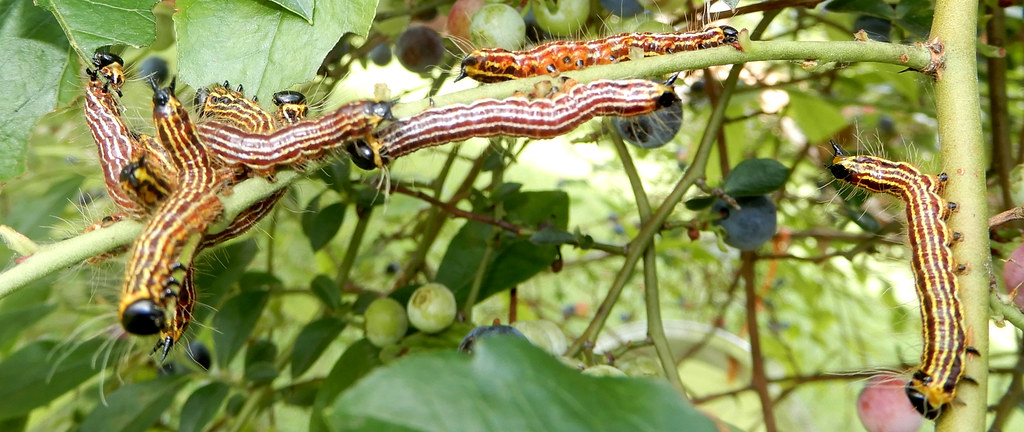In the intricate world of insects, communication occurs through various channels beyond the human sensory experience. While we rely heavily on visual and verbal cues, bugs have evolved sophisticated systems of interaction that often go unnoticed by casual observers. Among these methods, vibrational communication stands out as particularly fascinating and complex. Many insects use substrate-borne vibrations to convey critical information, including potential threats, mating opportunities, and territorial boundaries. This article explores the remarkable ways bugs utilize vibrations as a primary communication tool, examining whether these signals can truly convey emotions or warnings in the insect world.
The Science of Vibrational Communication

Vibrational communication, also known as substrate-borne communication, involves the transmission of signals through solid materials rather than through air. Insects produce these vibrations by drumming body parts against surfaces, stridulating (rubbing specialized body parts together), or tremulating (shaking their bodies). These vibrations then travel through the substrate—be it a plant stem, leaf, soil, or other material—and can be detected by other insects through specialized sensory organs. Unlike airborne sounds, which dissipate quickly, vibrations can travel significant distances through connected substrates with minimal signal degradation. This makes vibrational communication particularly effective for small organisms like insects, especially in environments where visual or chemical signals might be ineffective or dangerous to use.
Alarm Signals in Social Insects

Social insects like ants, termites, and some bees have developed sophisticated vibrational alarm systems that serve as their first line of defense against threats. When danger is detected, sentinel insects often produce distinctive vibrational patterns by drumming their heads or abdomens against tunnel walls or nest substrates. These vibrations propagate rapidly throughout the colony, triggering defensive responses in workers before the threat becomes widespread. Research has demonstrated that different vibrational patterns may communicate specific types of threats, allowing for appropriate colony-wide responses. For example, some ant species use different drumming patterns to distinguish between predator attacks and environmental dangers, enabling colony members to respond with either aggressive defense or evacuation as appropriate.
Mating Vibrations and Emotional Content

Insect mating rituals often involve elaborate vibrational courtship signals that could be interpreted as containing emotional content. Male treehoppers, planthoppers, and many beetle species produce species-specific vibrational songs by tremulating their abdomens against plant stems. These “love songs” vary in rhythm, intensity, and pattern, with females responding positively to high-quality performances that demonstrate the male’s fitness. The complexity of these exchanges suggests a form of emotional communication, as females actively discriminate between suitors based on the quality and characteristics of their vibrational performances. Some males even adapt their signals in response to female feedback, suggesting a rudimentary form of emotional negotiation during courtship interactions.
Vibrational Warning Systems in Non-Social Insects

Even solitary insects employ vibrational signals to warn conspecifics of danger. Certain caterpillar species, when threatened, produce warning vibrations that alert nearby caterpillars of the same species to potential predators. These warnings trigger defensive behaviors such as dropping from plants, freezing in place, or regurgitating distasteful compounds. The specificity of these warnings is remarkable—experiments have shown that caterpillars respond more strongly to vibrations from their own species than to similar vibrations from other insects. This selective response system suggests that these vibrational warnings contain specific information about the nature and severity of threats, functioning as a primitive form of emotional communication centered around fear and self-preservation.
Parental Care Through Vibration

In species with parental care, vibrations play a crucial role in parent-offspring communication that parallels emotional exchanges in vertebrates. Female shield bugs, for instance, guard their egg clusters and use vibrational signals to communicate with their developing offspring. If a predator approaches, the mother produces warning vibrations that cause the eggs or nymphs to become still, reducing their detectability. Remarkably, young nymphs can also produce distress signals when threatened, which trigger protective behaviors from the mother. This bidirectional communication system resembles emotional signaling in more complex animals, suggesting that even insects may experience primitive forms of parental concern and offspring distress.
Territorial Disputes and Aggressive Signaling

Many insects use vibrational signals to establish and defend territories against rivals. Male treehoppers engage in complex vibrational duels when competing for preferred positions on plants that attract females. These confrontations feature escalating patterns of vibrations that communicate increasing levels of aggression and determination. Scientists have documented these exchanges becoming more intense and rapid as conflicts progress, with distinct vibrational signatures indicating submission when one male eventually concedes. The ability to communicate levels of aggression, dominance, and submission through vibration suggests these insects possess a rudimentary system for expressing emotional states related to competition and territorial defense.
Vibrations as Group Coordination Signals

Beyond warnings and mating, vibrations serve as coordination signals in group-living insects. Tent caterpillars synchronize their foraging and resting behaviors through vibrational communication, with leaders producing distinctive patterns that initiate group movement. These coordination signals help maintain group cohesion and synchronize activities, increasing survival rates through improved predator detection and feeding efficiency. The vibrations appear to generate collective emotional states throughout the group, with signals of excitement spreading during discovery of food sources and signals of alarm propagating when predators approach. This system of vibrational coordination allows even brainless insects to function as cohesive social units with shared emotional responses to environmental conditions.
The Neurological Basis of Vibrational Perception

Understanding whether insects truly experience emotions requires examining the neurological foundations of their vibrational perception. Insects detect vibrations through specialized organs called subgenual organs located in their legs, which contain sensory neurons that respond to specific frequencies and patterns of substrate movement. Recent neurological studies have revealed that insect brains process these signals in specialized regions dedicated to vibrational information, separate from other sensory inputs. While insect brains lack the complexity of mammalian emotional centers, they do contain neural circuits that evaluate the significance of vibrational inputs and trigger appropriate behavioral responses. These dedicated neural pathways suggest that insects may experience primitive versions of what we recognize as emotional states, even if they differ fundamentally from human emotions.
Interspecies Vibrational Eavesdropping

The sophisticated nature of vibrational communication has led to evolutionary arms races between species, with predators evolving to detect prey vibrations and prey developing counter-adaptations. Some spider species, for instance, can detect the distinctive vibrations of potential prey on their webs and distinguish these from environmental vibrations like wind or falling debris. Conversely, certain insects have evolved to mimic the vibrational patterns of less palatable species, effectively “lying” about their identity to avoid predation. This sophisticated deception suggests that vibrational communication contains sufficient emotional and warning content to be worth mimicking or falsifying. The existence of such deceptive practices indicates that these signals carry meaningful information about the sender’s identity, intentions, and emotional state.
Vibrational Communication in Water

Aquatic insects face unique challenges in communication, yet many have developed sophisticated vibrational signaling systems adapted to underwater environments. Water striders communicate through ripples on the water’s surface, which function as vibrational signals carrying information about identity, mating readiness, and territorial boundaries. Backswimmers and water boatmen produce underwater vibrations by stridulating or tapping specialized body parts against air bubbles they carry. These aquatic vibrational signals can convey warnings about predators, with distinctive patterns triggering immediate escape responses in conspecifics. The persistence of vibrational communication across such diverse habitats underscores its fundamental importance in insect emotional and warning systems.
Technological Applications of Insect Vibrational Signals

Understanding insect vibrational communication has inspired innovative technological applications in agriculture and pest management. Researchers have developed vibration-based monitoring systems that can detect the presence of wood-boring pests like termites by recognizing their distinctive feeding and movement vibrations. Other applications include disrupting mating in agricultural pests by broadcasting artificial vibrational signals that interfere with courtship communications. These technologies exploit the emotional and warning content of insect vibrations, effectively “speaking their language” to manipulate their behavior. As our understanding of vibrational communication advances, we may develop even more sophisticated methods of interacting with the emotional lives of insects through their preferred communication channel.
Philosophical Implications: Do Insects Have Emotions?

The question of whether insects truly experience emotions remains philosophically complex. Traditional views have denied emotional experiences to insects based on their relatively simple nervous systems and the absence of structures analogous to the mammalian limbic system. However, modern research challenges this perspective by demonstrating that insects exhibit behavioral and neurological responses to stimuli that parallel emotional states in vertebrates. The sophisticated nature of vibrational communication, with its capacity to convey warnings, mating interest, aggression, and alarm, suggests at minimum that insects possess internal states that function similarly to emotions, even if they differ in subjective experience. Perhaps instead of asking whether insects have emotions identical to ours, we should recognize that they have evolved their own forms of affective states adapted to their unique ecological niches and sensory worlds.
Future Research Directions

The field of insect vibrational communication stands at an exciting frontier, with numerous unanswered questions awaiting investigation. Advanced technologies like laser vibrometry now allow researchers to detect and analyze vibrations too subtle for previous instruments, opening new windows into the complexity of insect communication. Future research will likely focus on decoding the specific information content of different vibrational patterns and understanding how insects integrate vibrational information with other sensory inputs. Another promising direction involves exploring whether insects can learn new vibrational patterns or modify their signals based on experience, which would suggest greater cognitive flexibility than previously recognized. As these studies progress, we may discover that the emotional lives of insects, expressed through vibration, are far richer and more complex than we ever imagined.
Conclusion

The world of insect vibrational communication reveals a hidden dimension of emotional and warning signals that surrounds us constantly yet remains largely imperceptible to humans. From the alarm drumming of ants to the love songs of treehoppers and the parental warnings of shield bugs, insects have developed sophisticated systems for conveying critical information through substrate vibrations. While these signals may not reflect emotions identical to human experiences, they clearly communicate internal states and vital warnings that shape insect behavior and survival. As we continue to decode these vibrational languages, we gain not only practical applications for pest management and conservation but also a deeper appreciation for the rich sensory worlds and communicative capacities of the small creatures with whom we share our planet.

